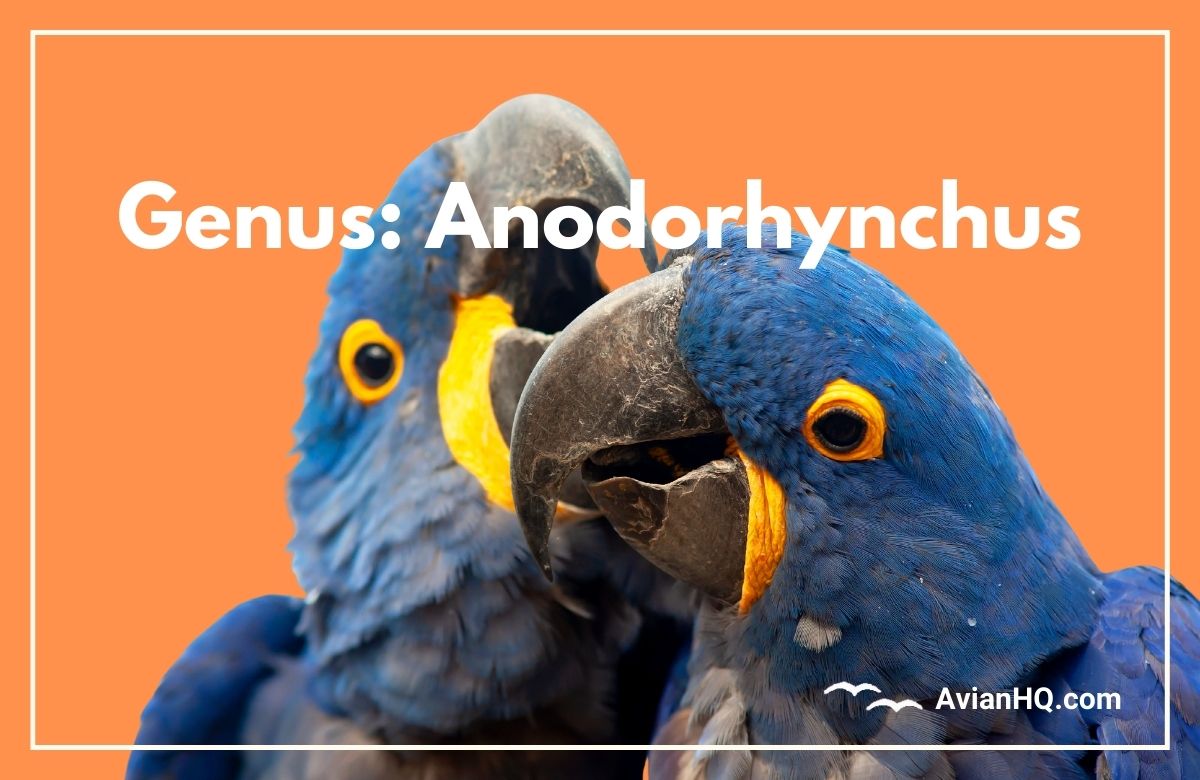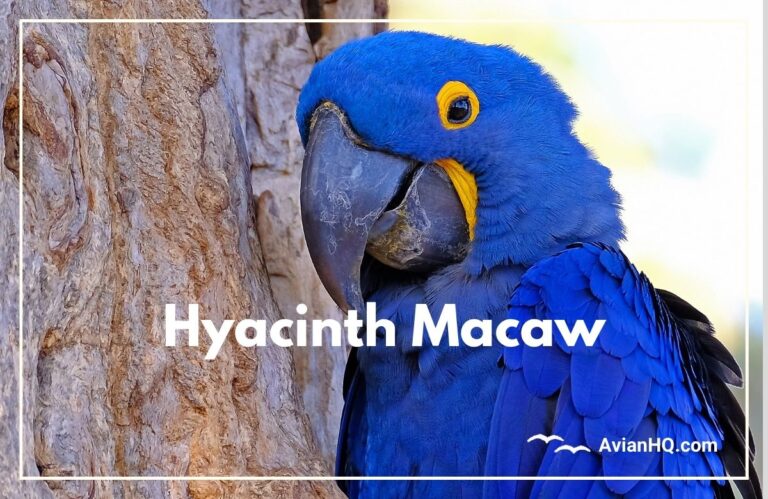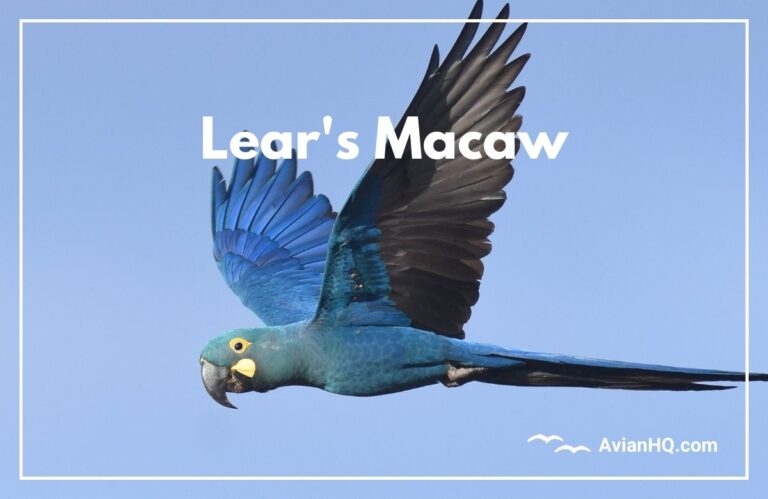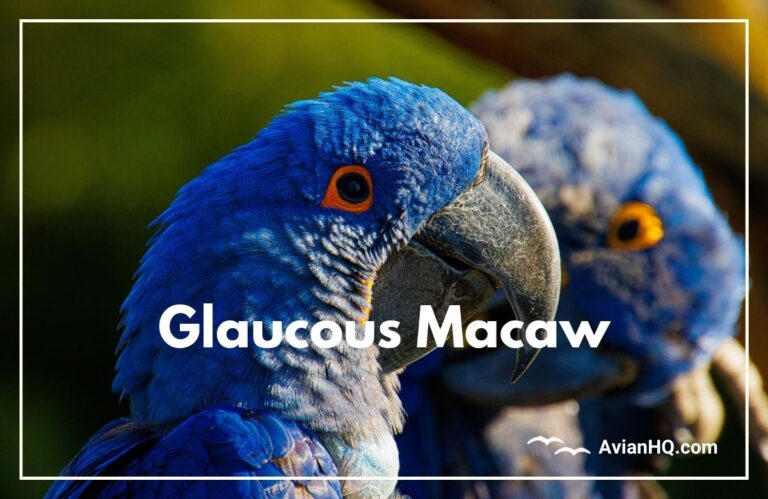Genus: Anodorhynchus
Have you ever seen a large, vibrant blue macaw soaring over the forests of South America? If so, chances are it was a member of the genus Anodorhynchus – some of the most impressive parrots on Earth!
Anodorhynchus macaws live in central and eastern regions of South America. They prefer open habitats like grasslands and palm groves over thick rainforest. Three species exist within this genus:
- The regal Hyacinth Macaw
- The endangered Lear’s Macaw, also called the Indigo Macaw
- The now-extinct Glaucous Macaw
“Anodorhynchus macaws have stunning cobalt feathers and powerful curved beaks that they use to crack ultra-hard nuts and seeds”
At up to 100 cm (39 inches), Hyacinth Macaws claim the title of the world’s longest parrot species. Their outsized beaks pack a punch too – Anodorhynchus macaws have evolved to feed almost exclusively on the nuts of difficult-to-crack palms.
Read on to learn more about these impressive creatures, from their unique behaviors to conservation challenges they face today. Discover what makes this eye-catching genus so iconic in the parrot world!
Species Spotlights
The Anodorhynchus genus contains three striking species, though tragically only two remain today. Let’s spotlight what defines these remarkable macaws.
Glaucous Macaw
- Former range: Eastern South America mainly in Paraguay, Brazil, and northern Argentina
- Distinct features: Bright blue plumage with pale grey or “glaucous” tinge; large size around 90-100 cm (35-39 inches)
- Likely extinction cause: Habitat loss from deforestation and conversion to agriculture in the 1800s
Once found in palm groves and forest-grassland environments, the majestic Glaucous Macaw fed almost entirely on the nuts of the yatay palm. As these palm habitats were cleared for cattle ranching, this macaw lost both its food source and nesting sites in tree cavities. The last confirmed sighting occurred in the early 1900s.
Hyacinth Macaw
- Current range: Three isolated populations in northeastern Bolivia, eastern Paraguay and central Brazil
- Size and appearance: 100 cm (39 inches) long; bright cobalt blue with yellow skin around the eyes and base of bill
- Unique behaviors: Form lifelong pair bonds; male feeds female during incubation; uses strong beak to rip apart extremely tough palm nuts
The Hyacinth Macaw is the world’s largest parrot by length. It prefers more open woodlands near palm groves, especially the Acrocomia aculeata. Family groups cluster around these palm stands, nesting in tree cavities and foraging on the protein-rich nuts. Their distinctive blunt tongues help extract the kernels.
Indigo/Lear’s Macaw
- Rediscovery: This species was first discovered in 1978 in northeastern Brazil after being presumed extinct.
- Habitat and ecology: Nest solely on eroded cliff faces lining canyons; feed on licuri and bocaiuva palm nuts
- Cultural role: Featured in indigenous folklore; important in rekindling interest in conservation
With dramatic turquoise feathers, the Indigo or Lear’s Macaw has an extremely small habitat area centered around Canudos Biological Station in Bahia region. In the 1980s only 60 birds remained due to trapping and habitat loss. Thanks to sustained community protection efforts focused on nest sites, current population levels now exceed 1000 individuals.
Behavior and Intelligence
Anodorhynchus macaws have complex social connections and advanced problem-solving skills. Their behaviors reveal close bonds and adaptations to palm-nut diets.
Social Dynamics
- Mate for life – pairs preen and feed each other regularly
- Small family groups – offspring from previous years remain with parents
- Flock together at palm groves – up to 15 birds gather at plentiful food trees
Foraging Strategies
- Powerful beaks exert pressure up to 2000 pounds per square inch to crack nuts
- Specialized tongue tips extract tiny nutmeats
- Known to use tools – grab sticks/rocks to wedge in cracks and pry open
Nesting Habits
- Hollow tree cavities or eroded canyon crevices
- No nest construction materials added
- Eggs incubated for about a month while paired mates take turns brooding
Cognitive Abilities
- Crafted solutions in scientific testing – bent wires to retrieve rewards
- Understand concepts like object permanence more quickly than expected
- Capable of linking cause and effect – dropped stones strategically
Intelligence assessments place Anodorhynchus species among the top avian problem-solvers. Matching wits with formidable palm nuts likely contributed to advanced development in areas like planning and analytical thinking.
Cultural Significance
With their impressive size and colors, Anodorhynchus macaws hold a special place in human cultures within their native habitats.
Importance to Indigenous Groups
- Featured in folk tales and legends – portrayed as figures with human-like qualities
- Believed to embody spirits of ancestors – sighting carries spiritual meaning
- Symbol of power and authority – headdresses with bright feathers reserved for chieftains
Representation in Folklore/Art
- Depicted on handicrafts like pottery and textiles
- Stylized macaw symbols incorporated into petroglyphs and rock art
- Creative personification in songs, dances and mythology stories
Status as National Symbol
- Iconic parrot for conservation campaigns in all three countries
- Designated legally protected status due to ecological benefits
- Hyacinth Macaw selected as national bird of Brazil
As charismatic flagship species, Anodorhynchus macaws connect deeply to local cultures while raising international awareness. Their preservation protects indigenous traditions and fragile palm ecosystems alike.
Threats and Conservation
Although magnificent, Anodorhynchus macaws confront severe environmental pressures across their ranges from illegal trafficking to habitat destruction. Ongoing conservation initiatives aim to ensure future survival.
Habitat Loss
- Palm grove clearance for agriculture and cattle ranching
- Fragmentation leaves small, isolated populations
- Drought impacts susceptible habitats
Trapping for Pet Trade
- Most trapping occurs near roosts/nests sites
- Chicks poached from nest cavities for illegal export
- Licensed captive-breeding programs struggle to meet demand
Conservation Status
- Glaucous macaw: Extinct
- Lear’s macaw: Endangered with population of ~1,000
- Hyacinth macaw: Vulnerable with declining numbers
Ongoing Protection Efforts
- Increased legal protection with heavy penalties
- Expanding national parks and protected areas
- Community monitoring and guarding of nest sites
- Working with landowners to sustain wildlife corridors
Targeted conservation strategies that protect palm stands and nesting sites while also engaging local groups offer the best hope for safeguarding these threatened species going forward.
Conclusion
As we have explored, Anodorhynchus macaws represent a truly spectacular genus of parrots. Endemic to South America, they are renowned for their large stature, brilliant cobalt coloration, and specialized adaptations like their heavy-duty beaks for cracking ultra-hard palm nuts. Tragically the Glaucous Macaw species has been eliminated from earth due to habitat destruction. Yet Lear’s and Hyacinth macaws still cling to existence through dedicated conservation efforts.
These remaining giant macaws play vital roles in forest-grassland environments by dispersing palm seeds and pollination. Their decline directly impacts local indigenous cultures that revere them in lore and legends. Anodorhynchus macaws serve as apt symbols of both the fragile beauty and resilience of nature. With our support and environmental stewardship, future generations can continue to enjoy sighting their majestic forms soaring overhead.




